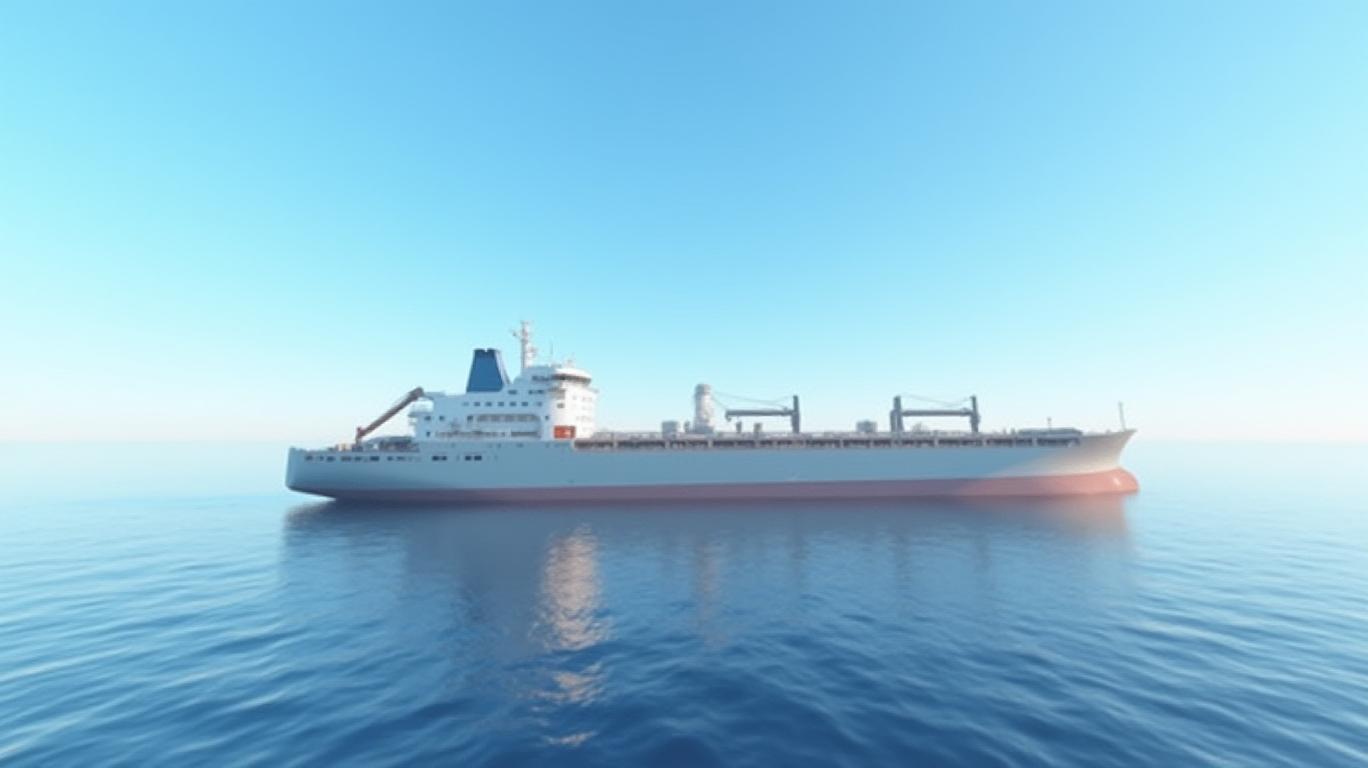Dorian LPG: Navigating Short-Term Challenges to Seize Long-Term LPG Demand Growth
The global energy transition is reshaping demand patterns for cleaner, versatile fuels like liquefied petroleum gas (LPG). As emerging economies prioritize sustainable energy solutions and petrochemical industries expand,
(NASDAQ: DG) stands at the intersection of these trends. Despite reporting a challenging Q4 2025, the company’s modern fleet, robust balance sheet, and shareholder-friendly policies position it as a compelling income play with long-term growth potential. Let’s dissect the data to uncover why now could be the time to board this vessel.
Q4 Results: A Temporary Storm in a Stronger Market Cycle
Dorian’s Q4 2025 results reflect the volatility of the LPG shipping sector. Revenues fell 46% year-on-year to $75.9 million, driven by lower time charter equivalent (TCE) rates and reduced available days. Net income dropped to $8.1 million, a stark contrast to the $79.2 million reported in Q4 2024. However, two critical points emerge from these figures:
1. Dividend Resilience: The company declared an irregular $0.50 per share dividend, adding to the $30 million paid earlier in 2025. This signals confidence in liquidity, with cash reserves of ~$317 million as of March 2025.
2. Adjusted EBITDA Stability: At $36.6 million, adjusted EBITDA remained positive despite market headwinds, underscoring operational resilience.
While short-term metrics are strained, the decline in TCE rates—now $35,324 per day compared to $63,375 in 2024—reflects broader industry factors, not company-specific mismanagement. Geopolitical disruptions (e.g., U.S. trade tariffs, Middle East sanctions) and weather-related demand shifts (e.g., U.S. LPG exports dropping in Q1 2025 due to cold weather) have temporarily depressed spot rates. These are cyclical issues, not structural.
Fleet Efficiency: The Edge of Modernization
Dorian’s 25-vessel fleet—comprising 20 ECO VLGCs and four dual-fuel ECO VLGCs—offers a critical advantage. Modern vessels boast lower fuel consumption, reduced emissions, and greater flexibility to adapt to evolving regulations. While Q4 vessel operating expenses rose 17% to $12,671 per vessel per day, this reflects higher drydock and maintenance activity, not inefficiency. Over time, these investments will enhance long-term reliability and chartering opportunities.
The company’s focus on fleet renewal is strategic: 18 of its vessels were built post-2015, ensuring compliance with upcoming environmental standards. As the International Maritime Organization’s 2030 sulfur cap looms, older, less efficient ships will face obsolescence, creating a natural barrier to entry and stabilizing freight rates for Dorian’s modern fleet.
Balance Sheet: A Fortress to Weather the Storm
Dorian’s financial health is a standout feature. With long-term debt at $557.4 million and no significant maturities until 2027, its debt-to-equity ratio remains manageable. The issuance of 2 million shares at $44.50 in 2025 further bolstered liquidity. This financial flexibility allows the company to:
- Capitalize on accretive acquisitions or newbuilds when opportunities arise.
- Maintain dividends even during downturns, shielding shareholders from short-term volatility.
Long-Term Demand Drivers: Fueling Growth
The LPG shipping sector is far from mature. Key demand catalysts include:
1. Energy Transition in Emerging Markets: LPG is a cleaner alternative to coal and oil for cooking and heating. Countries like India and Indonesia are expanding LPG access through subsidies, driving import growth.
2. Petrochemical Expansion: LPG’s propane and butane components are vital for plastics and petrochemical production. China’s petrochemical industry is projected to grow at 5-7% annually, requiring steady LPG supplies.
3. Arctic and Middle East Supply Routes: New shipping lanes are opening due to melting ice caps, reducing transit times and costs for LPG exports from Russia and the U.S. to Asia.
Dorian is uniquely positioned to capture these trends. Its dual-fuel vessels can operate in regions with stricter emissions regulations, while its chartering expertise allows it to lock in favorable long-term contracts.
Why Invest Now?
- Valuation Attraction: With a dividend yield of ~4.5% (post-Q4 payout) and a P/E ratio of ~10 (vs. industry averages of ~12-15), the stock appears undervalued relative to its earnings power.
- Income Stability: Consistent dividends, even in weak quarters, provide a cushion for investors.
- Long-Term Tailwinds: LPG demand is projected to grow at 3-4% annually through 2030, outpacing global economic expansion.
Conclusion: A Sailing Opportunity
Dorian LPG’s Q4 results highlight the cyclical nature of the shipping industry, but its fundamentals—modern fleet, fortress balance sheet, and shareholder-centric policies—suggest this is a temporary dip in a rising tide. As LPG demand accelerates due to energy transition and petrochemical growth, Dorian’s strategic positioning makes it a standout play for investors seeking both income and long-term capital appreciation.
The seas may be choppy now, but Dorian is charting a course toward calmer waters. For income-focused investors, this is a voyage worth embarking on.

Comments
No comments yet